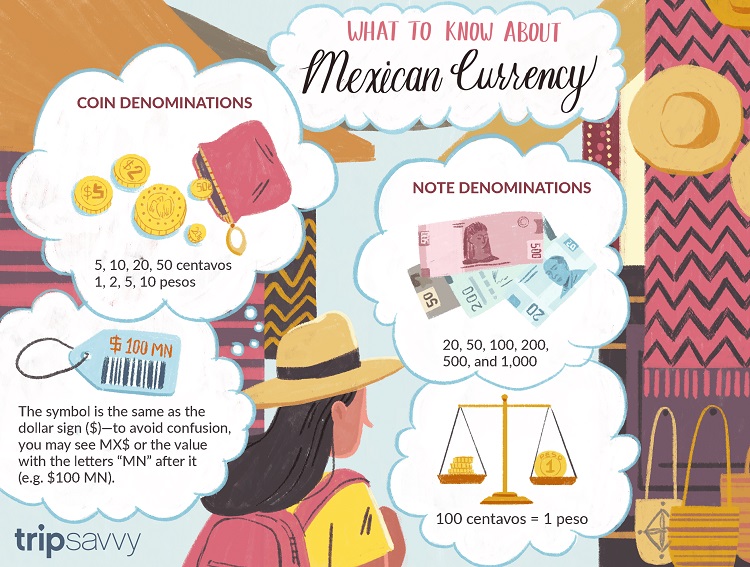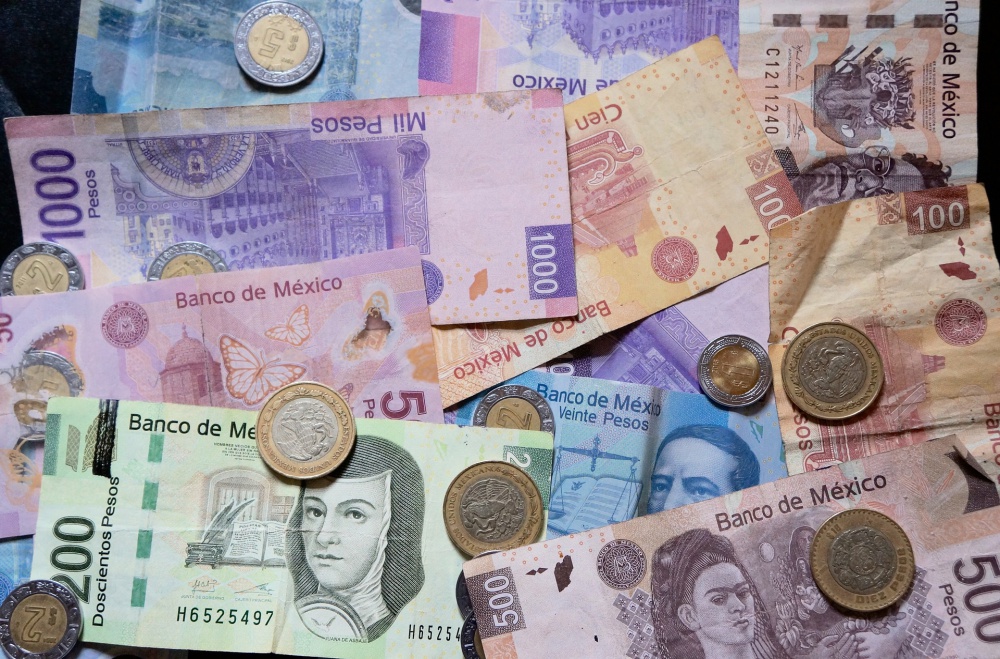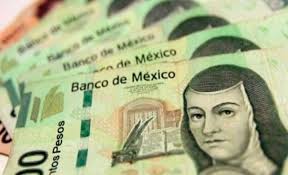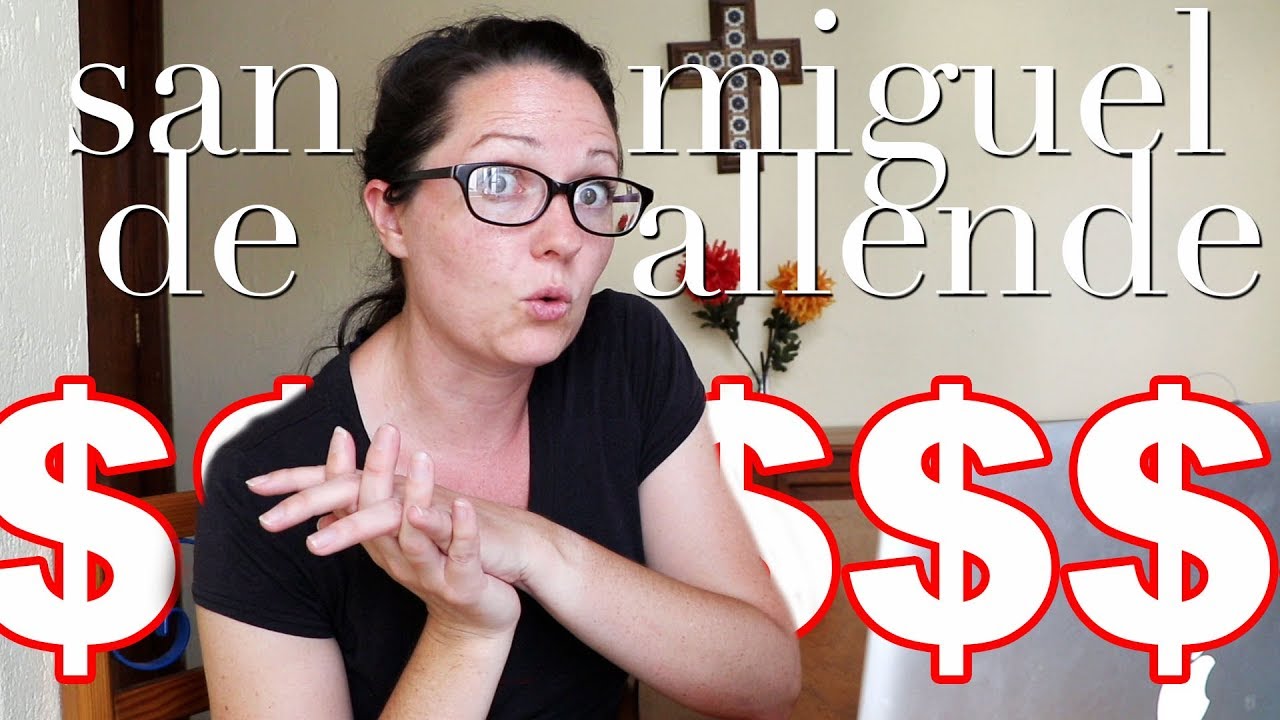Money is different in Mexico than up North. Obviously, the look and feel, but also how money works and one’s relationship with it take some mental adjustments to financially succeed here.

The currency in Mexico is the peso. Paper currency comes in denominations of 20, 50, 100, 200, and 500 pesos. Rarely do I come across a one thousand pesos note (currently worth about fifty US dollars). Coins come in denominations of 1, 2, 5, and 10 pesos, each clearly labeled. (I’m not going to even bother explaining the teeny, tiny half a peso coins as they so rarely come in handy.)
Way more so than up North, Mexico is a cash-based society. Credit cards are normally only handy at the large box stores and more expensive restaurants. Like my father before me, I keep my cash in envelopes marked for the various monthly expenses in a safe (though his “safe” was a rather large shoe-box, as his feet were rather clown-ish). Yes, most every Mexican home has a safe just for this reason.

Getting change is a problem. Small-denomination bills and coins are hard to come by, so get used to collect them. Shopkeepers and taxi drivers always seem to be out of change and small bills; particularly first thing in the morning or at the start of a work shift. There is an expectation that the customer should provide appropriate change, rather than the other way around, even in the large box stores with cashiers making a fuss when you don’t have an exact change which is blatantly ridiculous and annoying. They’ve more cash in the store than the Vatican!
You’ll learn quickly box stores and booze stores, areas of high cash-paying traffic, are the best place to get change for a 500 pesos note. If you go by a tamale vendor expecting to pay 10 pesos with a 200 peso note, you’ll likely walk away hungry. Yes, if it comes to making a sale or making change, most would rather not make a change.

Also don’t forget to have enough pesos to carry you over a weekend or Mexican holiday, when banks are closed. Wise people carry a spare ATM card as the machines are known for swallowing a card. Even at a bank, when it is open, you won’t get your card back. It’s unpleasant but will happen at some point.
Exchange Houses are working with a human option to getting pesos for US dollars but at slightly lower rates. The caveat here is you must have your passport on you. Before leaving either a bank or exchange-house window, count your change in front of the teller before the next client steps up. Cumbersome, but if there was an error and you’ve walked away, it can’t be fixed.

If only coming to San Miguel de Allende for a visit, a few days prior to departure, have your home bank do a peso exchange for you. It may take several days to complete but is normally fee.free.
For ATM safety, use machines in popular areas like the Jardin or a big box store, or the bank itself. Also, be aware, even if the bank shares the same name, the branch in Mexico is often owned by a different company than the one in the US and the two banks, with the same name, don’t intermix and treat the other as a separate entity. Confusing but quite common so don’t assume you can move money between accounts.
The US dollar sign, $, is also used to indicate pesos in Mexico. Assume all pricing is in pesos. We aren’t like Guatemala where even the ATMs dole out American dollars. Without a passport, you can’t exchange dollars, so to your typical Mexican the dollar is only good in a game of Monopoly.

Speaking of pesos, don’t bring back pesos to Mexico from a long-ago trip. Chances are the bills that are worthless as Mexico frequently changes their paper money to prevent counterfeiters. When pesos change form like the 500 pesos and 200 peso denominations recently did, get rid of your old bills over the next year as, eventually, they’ll be valueless. I can’t tell you how many times on tours people show me their old pesos which are often rather pretty. However, neither I nor anyone else will accept them.
Online banking is different here. I’ve yet to have my bank be able to access my account on-line and neither can I. It just means I stop in for paper copies once a month to make sure all is normal.
Bills are different too. Whether a credit card, water, electricity, etc. you as the consumer are expected to know when your payment is due and how much. You may get a bill in the mail, and you may not. Mail is flakier here than a Kardashian with cash. Knowing how much and when a bill is due, as a former CFO, was probably the most difficult thing to get used to.
Wait, I stand corrected, accounting terms were the most difficult thing to get used to. Even when properly translated into English they don’t mean the same thing. If going into investing and more complex finances than a checking account don’t assume because you know the word in English, in accounting terms, it means the same thing.
Credit card interest is way higher as are annual fees. That said, it is a joy to have a Mexican credit card in an emergency and your US bank is closed and has declined your hospital entrance payment.
Receipts are a huge deal in Mexico as folks are more suspicious of vendors than Northerners are. Hold on to your receipts for bills paid and anything doing with real estate. Even on an inexpensive bus ride, you’ll get a receipt. Just take it, but that one you can throw away later, but only after your ride.

I invest in Mexican bonds (both corporate and government) and feel they are the unsung heroes of financial independence world-wide. By Northern standards the rates are great, and, get this, taxes are taken out automatically upon your interest payment. You fill in nothing to show you have paid your Mexican taxes, though you still have to for your US taxes even if you don’t owe. Considered it a lost Sunday afternoon in exchange for way better interest rates!

Banks run the gamut in terms of services. Most only offer checking and savings accounts and for many Northerners that suffices. Others offer a wide array of investment opportunities, insurances, and consulting. For the last decade, I’ve been with salsa dancer extraordinaire Maggie Herrera of Inbursa Bank. I opened my investment account with Maggie and have been with her at the bank and on the dance floor, in English classes and fiestas with her family. It’s comforting to know your bank’s representative is a decent person even outside the office and that her grandson has an enormous fondness for McDonald’s fries.
Also, be very particular with the name listed as a beneficiary on your bank account. It supersedes your will, and the name must be exactly the same as on their passport. Mary Doll on a form is a different person than Mary T. Doll on her passport. Be precise about this and save your heirs’ countless frustrations.
So, to be financially happy in Mexico adjust your expectations, be prepared to learn new vocabulary, and reap the benefits of safe, high interest-earning investments. Oh, and always think about how and when you can exchange a 500 peso note for something smaller!
For today’s trivia, that Inquisition Era nun you see on the older, green 200 peso note, notice the book behind her she has written. With proper magnification, you can view she has scribbled “God help the men that underestimate the intelligence of women.”
by Joseph Toone
- TripAdvisor’s top tour guide in San Miguel de Allende with History and Culture Walking Tours and Joseph Toone Tours.
- Amazon’s best selling author of the San Miguel de Allende’s Secrets book series on making your adventures around town unique.
- Creator of the Maria Dolls coloring book helping indigenous doll makers.

